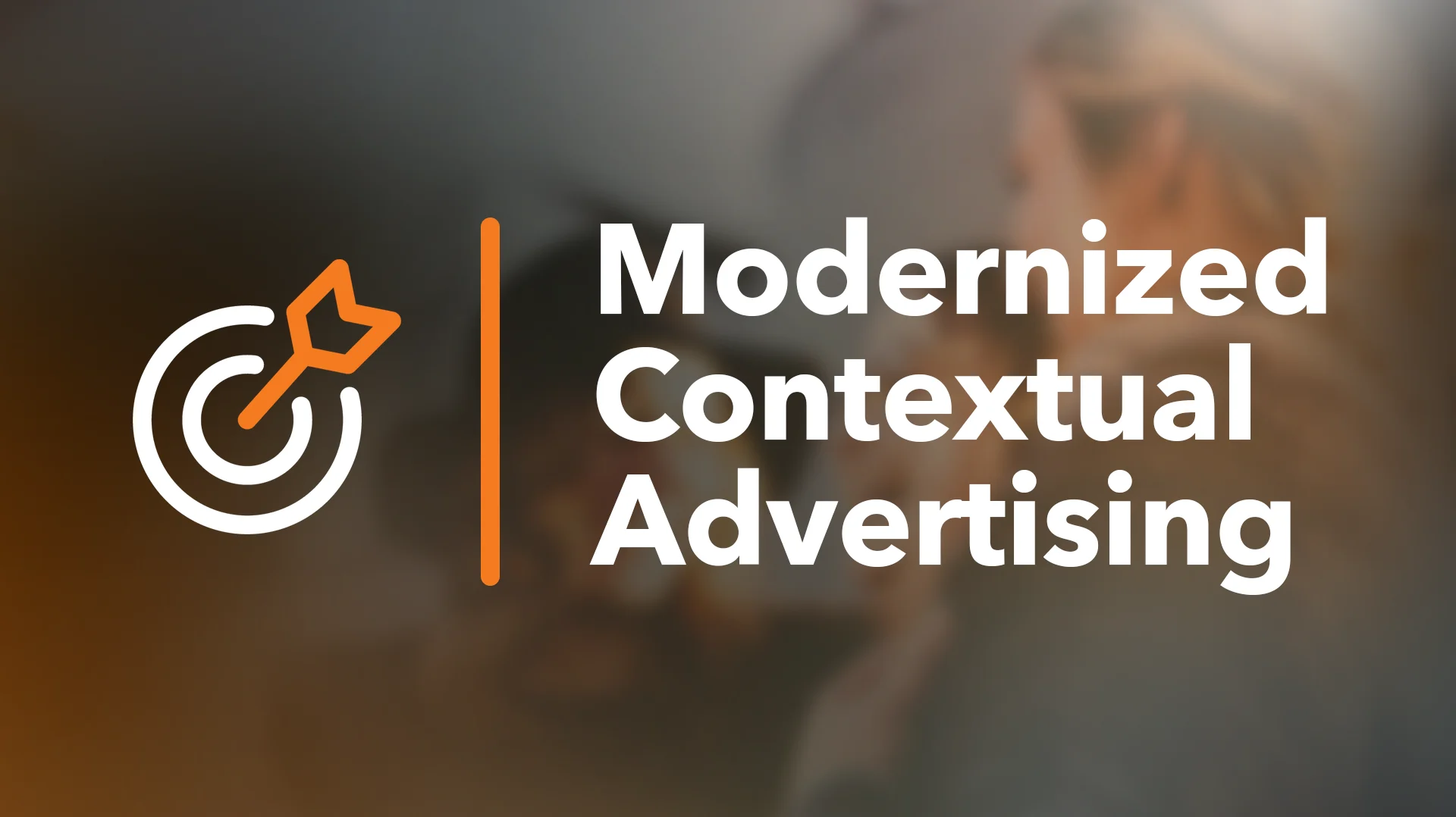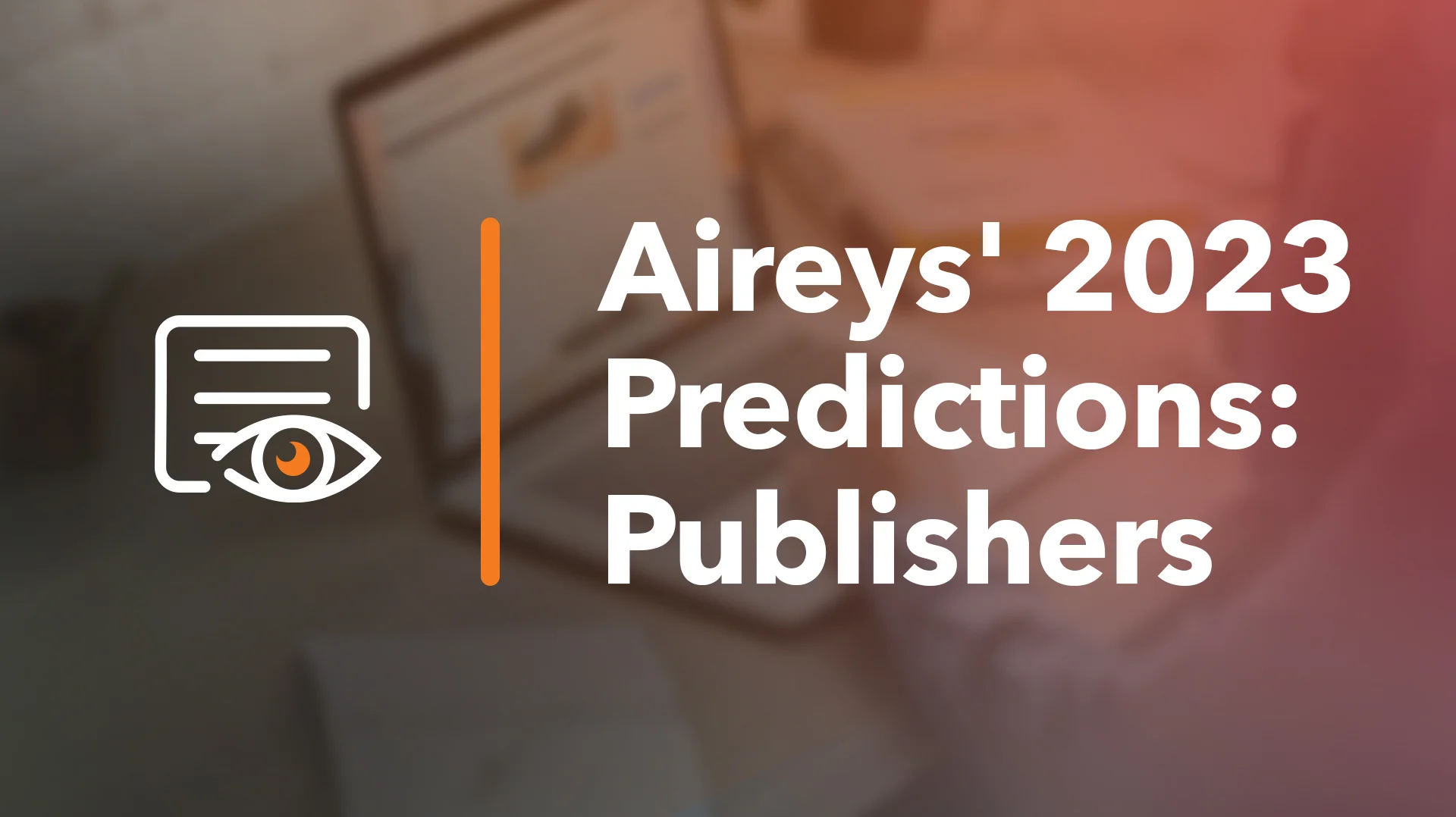Old-school contextual advertising has evolved with new capabilities to improve ad performance, including audience segmentation, behavior, and engagement. This article covers what ad buyers need to know to start experimenting.
Traditional contextual advertising works by matching a webpage’s content with an ad’s content. Instead of using data about the user, the automated system displays relevant ads based on the page’s content. For example, an article on the NBA finals would likely match up to a sports drink advertisement. So there’s still a place for contextual advertisements. Still, as the cookieless future draws near, advertisers need to look for channels with the same or better performance achieved historically using cross-domain identifiers.
The answer is an evolution of old-school contextual advertising. Instead of relying solely on content relevance, this new approach will include an analysis of each publisher’s audience into segments by demographic (if available) and by interest. Additionally, ad buyers can further apply user behavior and engagement metrics to target their ideal audience. These new capabilities will generate much better ad performance than traditional contextual advertising and will therefore be a vital advertising approach in the cookieless future. This article will cover the changes in contextual buying, what advertisers need to start experimenting with, and incorporating this into their media plans.
The New Layers of Contextual Advertising and Why Advertisers Need Them
With third-party cookie deprecation, many SSPs (Supply-Side Platforms) are leaning heavily into Universal IDs to become the replacement for cross-domain identifiers. Unfortunately, this is a dwindling amount of internet traffic. When third-party cookies are fully deprecated, 90% of traffic will be expected to lack a cross-domain identifier. This means ad buyers must look at new approaches to meet their advertising goals. Ad sellers are looking to improve the results of contextual advertising to fill this gap.
Traditional contextual advertising assumes that any person reading content relevant to the advertised product or service will be interested in the product or service. Logically, everyone knows that won’t be true for every viewer, so lots of spending on ad dollars go to wasted impressions. That said, contextual advertising is future-proof from data privacy concerns since it doesn’t require data identifiers. So how can it be improved?
The first step that publishers are making is to create audience segmentation. Within a publisher’s site, they can create segments based on audience interest determined by the content they’ve consumed. These segments will likely follow the IAB Tech Labs Audience Taxonomy but will be up to the publisher to define levels of engagement. For instance, if a person views a sports page on the site, they could group them into a Sports Interest segment.
Going deeper, publishers will look to define levels of interest within each segment. So if a person consumes three sports articles within 14 days, they might be grouped into a sub-segment of the Sports Interest group called Sports Fanatics. This new layer of audience segmentation will allow advertisers to be more targeted in their ad spend.
The Challenge: Every Audience Segment Definition is Unique to Ad Sellers
While deeper levels of audience segmentation are a significant improvement, it’s also creating a new challenge for advertisers. For example, the IAB Audience Taxonomy has over 1500 segmentations with up to 6 levels (or tiers) for each segment. The problem comes from how each publisher defines these segments’ rules.
Considering the Sports Fanatic example, one publisher may define a Sports Fanatic as consuming three sports articles within 14 days, while another publisher defines their Sports Enthusiast segment as having read 1 article in 30 days. Another still may define it as two articles within seven days.
This causes a big problem for advertisers—both in efficiently making ad purchases and attempting to compare results.
A Middle Ground is Needed to Deliver Consistent Results
To address this challenge, a layer of consistency needs to be added. Using an SSP that matches up one audience segmentation taxonomy across publishers so ads across sites can be equally measured and compared can achieve consistency. This would also open up the ability for custom segmentations. For example, suppose an advertiser considers a Sports Fanatic to be anyone that consumes four sports pages a month. In that case, that segment could be created and applied as a taxonomy across publishers for consistent ad buying at scale. This will also save ad buyers significant time not having to look at all the segment definitions of each publisher and purchase site by site.
Beyond efficiency in ad buying, there’s also an opportunity to improve the quality of audience segments. This involves quantifying the impact of contextual buying through behavioral and engagement signals. For instance, understanding the time on the page, scroll depth, clicks, and other behavioral metrics can be added to the interest segments to improve quality. For example, with those metrics, advertisers could target Sports Fanatics who consume four sports pages a month AND stay on the page for more than 45 seconds AND scroll to more than 50% of the page. This would ensure a higher quality of engagement.
What Advertisers Need to Consider to Prepare for Cookieless Advertising
Advertisers must agree that continuing with third-party cookies and Universal IDs will be a game of diminishing returns. The audience will continue to shrink as data privacy laws will continue to eliminate identifiers. Therefore, looking into alternative ways to capture the attention of 90% of the digital audience that won’t have identifiers is critical for ad buyers to begin working on.
The evolution in contextual advertising capabilities is a great place to start with this exploration. Advertisers should consider the audience segments they want to reach and known qualifiers to measure their interest levels. When ready, begin experimenting with mid-funnel ads with CTAs to gain confidence in results before running brand impression ads. The other thing advertisers need to think about is attribution. It doesn’t exist in this approach, but is it required? SSPs are already testing the efficacy of this new advertising approach against third-party identifiers, so proof of accuracy and ad performance will be available. Finally, advertisers must shift from attribution to ad performance matched with business outcomes.
Vendors’ ongoing testing shows that the evolution of contextual advertising to smart segmentation will result in the same or better ad performance. An extra benefit to ad buyers is that publishers will put more high-value audience definitions into programs because the data can’t be leaked. All first-party data will be stripped from the deal using a Deal ID. With the addition of behavioral metrics, this approach has the potential to be extremely high quality and a great mechanism to add to media plans.





